Jim Gain is one of the San Joaquin Valley’s most accomplished amateur naturalists and photographers. His Reflections of the Natural World website is trove of spectacular nature photography, including species from places like Belize and Yucatan. We’re proud to present Jim’s “Learn 100 Common Valley Birds” series here. ed.
Wilson’s Warbler – Species #30
The Wilson’s Warbler (Cardellina pusilla) is a small, brightly colored songbird that can be found in the Central Valley of California during its migration season. These birds are about 4.5 inches long and have a wingspan of approximately 6 inches. They are bright yellow in color with a black cap on their head and black wings. Females and immatures are drabber with a less distinctive black cap.
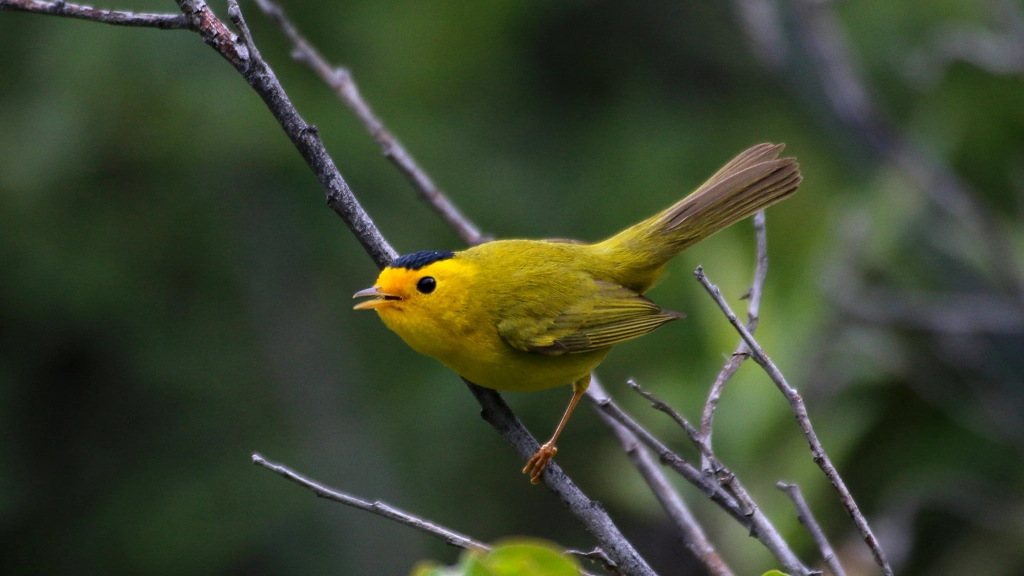
Wilson’s Warblers are insectivores and are often found flitting through vegetation in search of insects. They are known for their distinctive song, which is a series of high-pitched notes that sound like “tee-hee-tee-hee-tee-hee.”
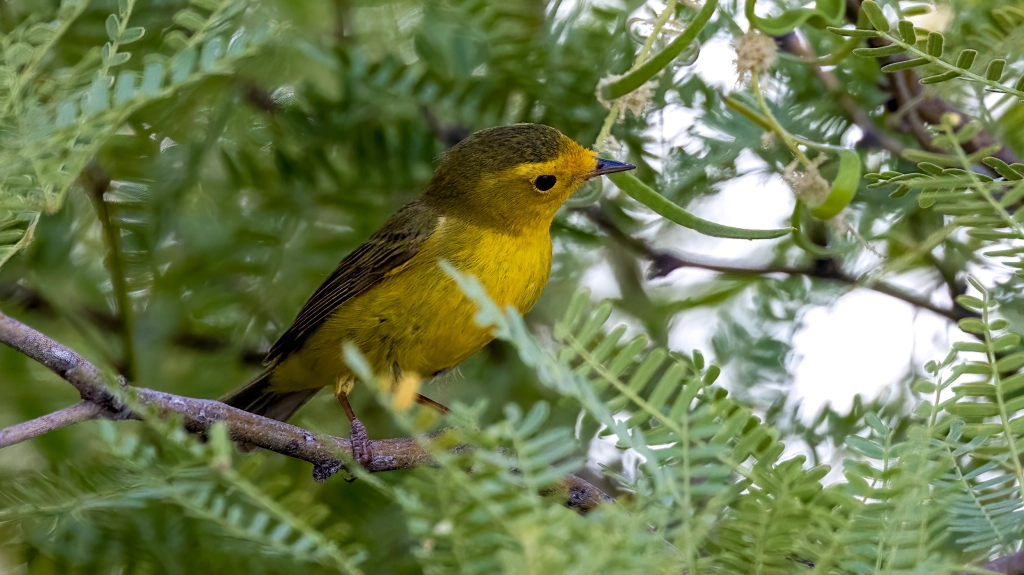
Despite their small size, Wilson’s Warblers play an important role in the Central Valley’s ecosystem by helping to control insect populations. However, like many bird species, they face threats from habitat loss and climate change, making conservation efforts crucial for their continued survival. Protecting the habitats that these birds rely on, such as riparian areas and wetlands, is essential to ensuring that they can continue to migrate through the Central Valley and beyond.
Yellow Warbler – Species #31
The Yellow Warbler (Setophaga petechia) is a small, brightly colored songbird that inhabits the Central Valley of California during the breeding season. These birds are easily recognized by their bright yellow plumage, which is accented by rusty red streaks on the breast and flanks, and by their black wings with white wing bars.
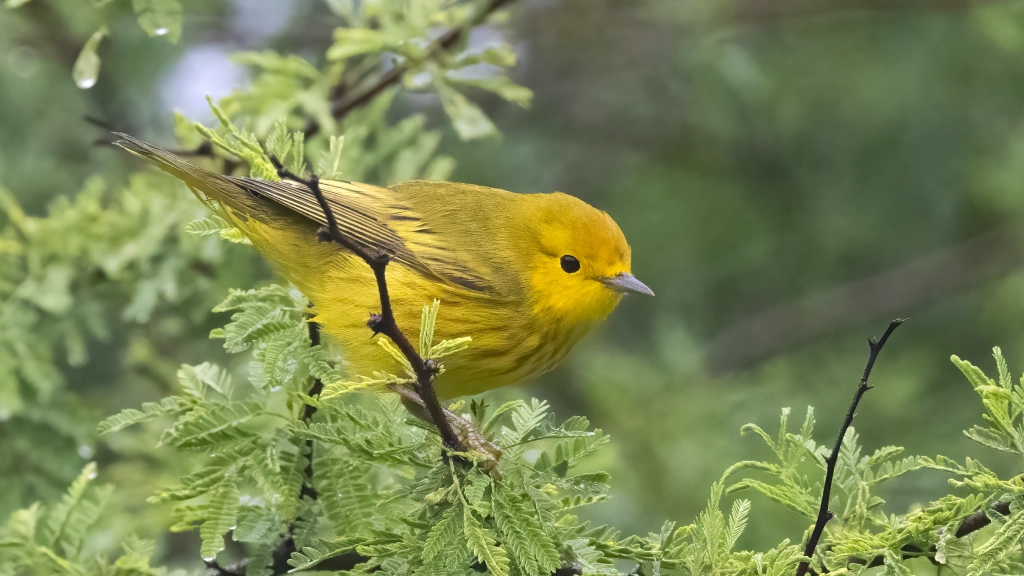
Yellow Warblers are typically found in riparian habitats such as streamside woodlands, hedgerows, and willow thickets. During the breeding season, they construct cup-shaped nests made of grasses and other plant materials, which are often lined with spider webs and feathers. Females typically lay 3-5 eggs, which hatch after a 10-12 day incubation period.
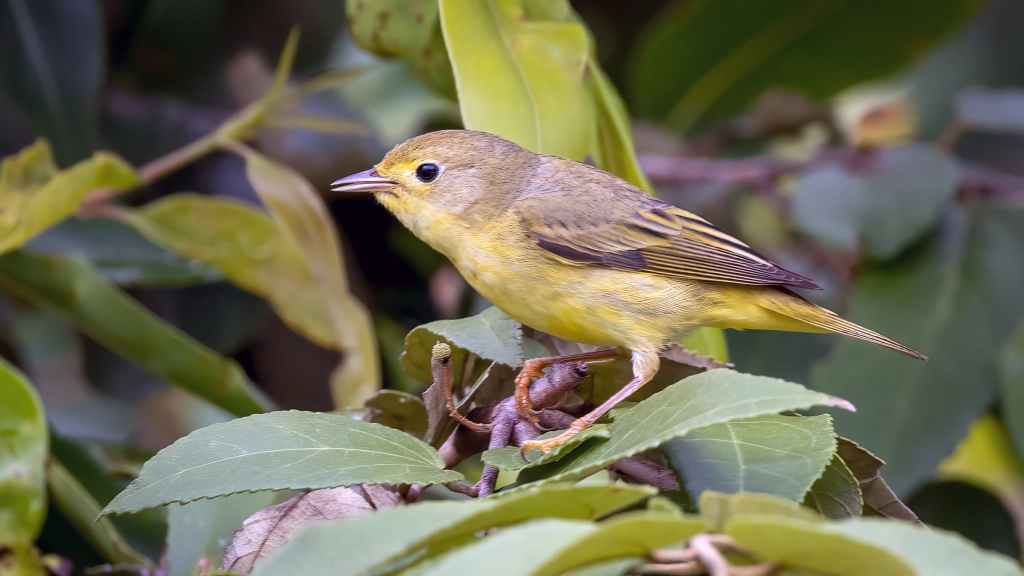
Yellow Warblers are insectivorous and feed primarily on small insects such as caterpillars, beetles, and spiders. They are also known to occasionally feed on fruit and nectar. These birds migrate south to Mexico, Central America, and the Caribbean during the winter months. The conservation status of Yellow Warblers is currently listed as Least Concern by the International Union for Conservation of Nature (IUCN), but habitat loss and degradation are potential threats to their populations.
Warbling Vireo – Species #32
The Warbling Vireo (Vireo gilvus) is a small, olive-gray bird with a white underbelly and faint wing bars. It measures about 4.75 inches in length and has a wingspan of approximately 8 inches. The species is known for its distinct, high-pitched warbling song, which it uses to communicate with its mate and establish its territory.
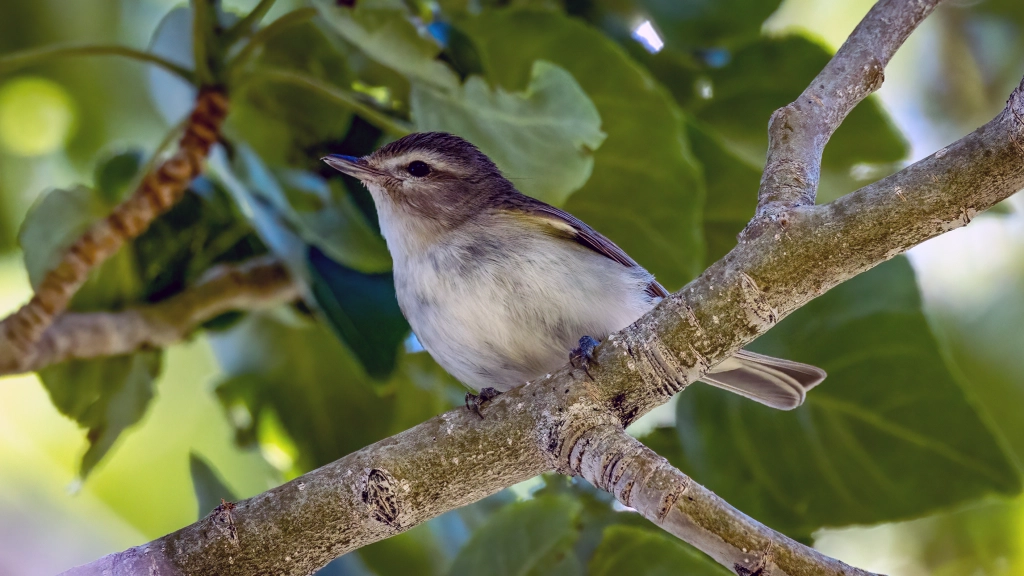
In the Central Valley of California, the Warbling Vireo is a fairly-common neotropical migrant, passing through in late April or early May and making its return trip back south in August or September. The bird breeds in higher elevation riparian habitats, including streams, rivers, and creeks, where it builds a cup-shaped nest in the fork of a tree or shrub.
Warbling Vireos are famous for their distinctive, warbling song, which is often described as sounding like “three eight, three eight, three eight.” They are a migratory species and spend the winter in Mexico, Central America, and South America before returning to their breeding grounds in the spring. Overall, Warbling Vireos are an important and fascinating part of the avian community in this region, and their presence is a sign of a healthy and diverse ecosystem.

Warblers have colors only skilled artists could mix. That would require a lot of mixing, then only to copy these lovely examples of Creation’s designer.
I will be on the lookout for these avians coming to, visiting, and going from our Central Valley environments. I appreciate that Jim Gain described them with such meticulous detail. I will be listening for each of their songs.
We are so blessed to have Jim Gain whose interest in these avians is so pronounced.
Thank you, Jim